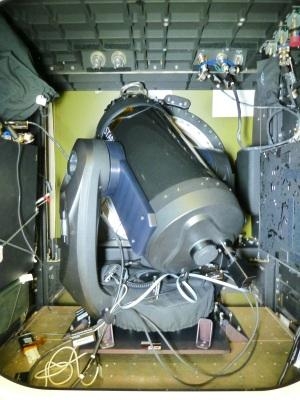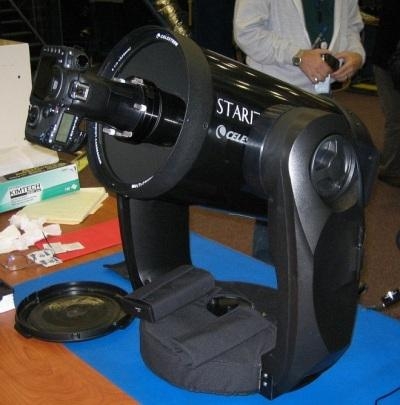Mon, Jul 23, 2012
ISERV Pathfinder To Be Installed In The Station's Destiny Laboratory
A remote-controlled Earth-observing camera system called ISERV launched to the International Space Station (ISS) aboard the Japan Aerospace Exploration Agency's third H-II Transfer Vehicle (HTV-3) Friday. Once installed, the system will be directed by researchers on the ground to acquire imagery of specific areas of the globe for disaster analysis and environmental studies.

ISERV stands for the International Space Station SERVIR Environmental Research and Visualization System. The space station provides researchers a unique perspective through global observations from space. SERVIR is a Spanish acronym meaning "to serve." Also known as the Regional Visualization and Monitoring System, the program provides satellite data and tools to environmental decision makers in developing countries. SERVIR is a partnership between NASA and the U.S. Agency for International Development (USAID).
ISERV will be installed in the Window Observational Research Facility (WORF) in the station's Destiny laboratory. The system is intended to help scientists gain operational experience and expertise and inform the design of a more capable system in the future. Ideally, a future operational system will be able to monitor disasters on Earth. "ISERV came about because officials in developing countries are sometimes unable to acquire the images they need to address environmental threats and provide post-disaster assessments," said Nancy Searby, capacity building program manager for the SERVIR program at NASA Headquarters in Washington. "The SERVIR team approached NASA's ISS and Earth Science Applied Sciences Program with the concept of acquiring the needed imagery from the ISS. The ISERV test bed payload is a result of that collaboration."
The ISERV system, based on a modified commercial telescope and driven by custom software, will use the Earth-facing Destiny science window to obtain images of Earth's surface. It will then transmit the data to scientists on the ground. "Images captured from ISERV on the ISS could provide valuable information back here on Earth," said Dan Irwin, SERVIR program director at Marshall. "We hope it will provide new data and information from space related to natural disasters, environmental crises and the increased effects of climate variability on human populations."

ISERV is the first of an envisioned series of space station Earth-observing instruments, each to feature progressively more capable sensors. Future sensors could be mounted on the exterior of the station for a clearer, wider view of Earth. ISERV development was funded as a collaboration between NASA's Human Exploration and Operations Directorate and the Science Mission Directorate's Earth Science Division Applied Sciences Program.
The team at the Payload Operations Center at Marshall is creating computer-based materials for training the space station crew to assemble and install ISERV in the WORF rack. Normal operations aboard station are set to begin in November.
(Images provided by NASA)
More News
Airbus Racer Demonstrator Makes Inaugural Flight Airbus Helicopters' ambitious Racer demonstrator has achieved its inaugural flight as part of the Clean Sky 2 initiative, a corners>[...]
A little Bit Quieter, Said Testers, But in the End it's Still a DA40 Diamond Aircraft recently completed a little pilot project with Lufthansa Aviation Training, putting a pair of >[...]
Line Up And Wait (LUAW) Used by ATC to inform a pilot to taxi onto the departure runway to line up and wait. It is not authorization for takeoff. It is used when takeoff clearance >[...]
Contributing To The Accident Was The Pilot’s Use Of Methamphetamine... Analysis: The pilot departed on a local flight to perform low-altitude maneuvers in a nearby desert val>[...]
From 2015 (YouTube Version): Overcoming Obstacles To Achieve Their Dreams… At EAA AirVenture 2015, FedEx arrived with one of their Airbus freight-hauling aircraft and placed>[...]
 Airbus Racer Helicopter Demonstrator First Flight Part of Clean Sky 2 Initiative
Airbus Racer Helicopter Demonstrator First Flight Part of Clean Sky 2 Initiative Diamond's Electric DA40 Finds Fans at Dübendorf
Diamond's Electric DA40 Finds Fans at Dübendorf ANN's Daily Aero-Term (04.23.24): Line Up And Wait (LUAW)
ANN's Daily Aero-Term (04.23.24): Line Up And Wait (LUAW) NTSB Final Report: Extra Flugzeugbau GMBH EA300/L
NTSB Final Report: Extra Flugzeugbau GMBH EA300/L Classic Aero-TV: 'Never Give Up' - Advice From Two of FedEx's Female Captains
Classic Aero-TV: 'Never Give Up' - Advice From Two of FedEx's Female Captains




